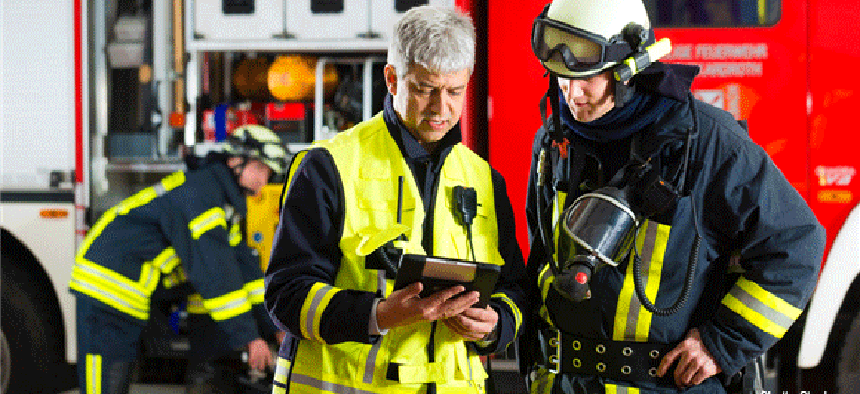How the Navy is using FirstNet
The high-speed wireless network can make it easier for the Navy to work with the local public-safety community.
Now that the Department of the Navy has opted into FirstNet, the nationwide dedicated public-safety communications platform that AT&T is building, work is starting on identifying eligible entities and how the network might work for them.
One option is the support of Defense Support of Civil Authorities (DSCA), a process by which the military assists in missions that civil authorities typically handle, according to Mike Leff, vice president for defense at AT&T Public Sector. FirstNet can facilitate interoperability between naval bases and their surrounding communities.
DSCA “is where I believe the Navy and local communities will get tremendous value of improved coordination and communications with first responders using the FirstNet platform,” Leff said. “Essentially [DSCA] provides Department of Defense assets to several authorities in response to requests for things like domestic emergencies, law enforcement support or other domestic activities. This is where you really see the requirements for a platform like FirstNet.”
Although DON covers the Navy, Marine Corps and Coast Guard, Leff pointed to a pilot test that AT&T did with Maxwell Air Force Base that focused on beefing up physical perimeter security using sensors. Those sensors captured data that was sent on the AT&T network to a control center that was essentially an intelligent dashboard. The test used a closed LTE cellular network, and the data from the sensors traveled on an encrypted link back to the control center and then out to base personnel.
With FirstNet, 5G and edge computing, however, that process can be amplified and accelerated, Leff said. Plus, that trifecta can speed the development of smart bases in general, much like smart city efforts. AT&T is working with the Navy to identify smart base applications, but Leff said he can’t provide details because of security concerns.
“We are beginning to work top-down, bottom-up with the Navy and Marine Corps, looking at base by base to better understand what the needs are," he said. By understanding "the current state infrastructure in terms of what’s on base -- whether it’s macro coverage, small-cell coverage all the way through fiber in the ground -- [we can] begin to put together a better view of the current state and then the future state and then line that up with the Navy’s priorities.”
Deployable network assets are another benefit FirstNet can offer DON, Leff said. These include satellite cells on drones and other technologies that provide a mobile cell site capability that can link to FirstNet via satellite.
“It really allows us to spin up networks on demand, where the traditional terrestrial network doesn’t reach today,” he said.
A third benefit is the FirstNet applications ecosystem -- essentially an app store dedicated to public safety organizations with secure credentialing and authentication.
“I think about augmented reality -- to be able to take real-world applications and actually look at other sensory input and visuals that you can overlay to get location information, just to get a better sense of what’s happening at an incident,” Leff said.
DON’s April 1 adoption announcement follows a February policy directive from CIO Thomas Modly who wrote, “the unique data management, data security and device requirements of the Department of Defense are key topics of government to government discussions and present opportunities for the FirstNet network to deliver a robust, wireless broadband capability.”
The attraction, Leff said, is the high reliability, security and interoperability of the core network. There are multiple geographically distributed core sites for redundancy and performance, and it has end-to-end encryption, round-the-clock security monitoring and identity credential and access management user authentication capabilities to ensure the right people are on the network at the right time.
“The Navy is looking at how FirstNet is going to be able to provide the Navy and the public-safety community and first responders with a very high set of quality-of-service and pre-emption capabilities," Leff said. I think that it’s going to be unmatched and exceed anything that the public-safety community has experienced before.”
NEXT STORY: Is defense acquisition at an 'inflection point?'





